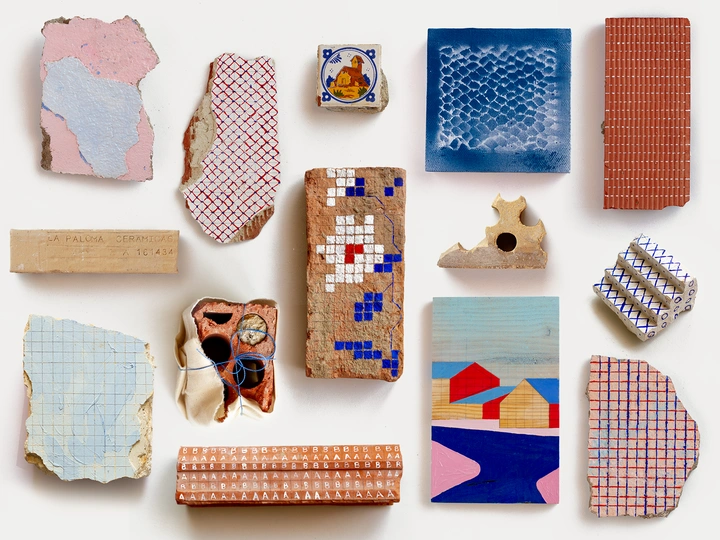Everyday archaeology

Lola Goyanes is an architect and visual artist. She independently explores the relationship between productive heritage and landscape from a gender perspective. Since 2020, she has dedicated herself to disseminating textile traditions through embroidery workshops that introduce this artistic practice to new audiences. Currently, she combines both areas of research, taking an approach to the territory through tactile representation that unites tangible and intangible memory.
As a textile artist, she collaborated with the Spanish Network for Rural Development on the Rural Youth Art Summit 2023 crafts program for young people. In 2024, she held her first solo exhibition, Los mismos lugares, at the University of Seville. This project brings together embroidery and engraving to explore productive constructions within an apparently bucolic landscape.
She studied architecture at the University of Zaragoza, specializing in urban and landscape design. She developed the research project Villafeliche: Paisaje y Memoria, which studies the marks that industry and agriculture have left on the territory of a historic Moorish town in Aragon. She earned her Master of Architecture degree from the Escuela Superior del Vallès in Barcelona. Goyanes graduated from the Fine Arts program at the University of Seville in 2025.
Contemporary European cities are constantly changing, with homes becoming battlegrounds. Gentrification forces internal migration within cities, transforming neighborhoods from within. New ways of living transform old buildings, and these renovations empty old homes of meaning. Each renovation brings the guts of the home out onto the streets, exposing the remains of lost intimacy in construction dumpsters. The walls and all the memories between them become waste.
Collecting and examining this rubble gives us a portrait of the most intimate aspects of the home, of the recent history of our societies and construction systems.
Everyday archaeology creates an inventory of interior spaces by collecting these remains. It reinterprets construction debris by recomposing it in an exhibition space that shows who we are.
The collected pieces are intervened using textiles as a metaphor for the home. Each remnant is handled with care, transforming the waste into a beautiful object that recovers a dwindling collective memory. The pieces create a new structure of weights and accents unrelated to the architectures to which they belonged.